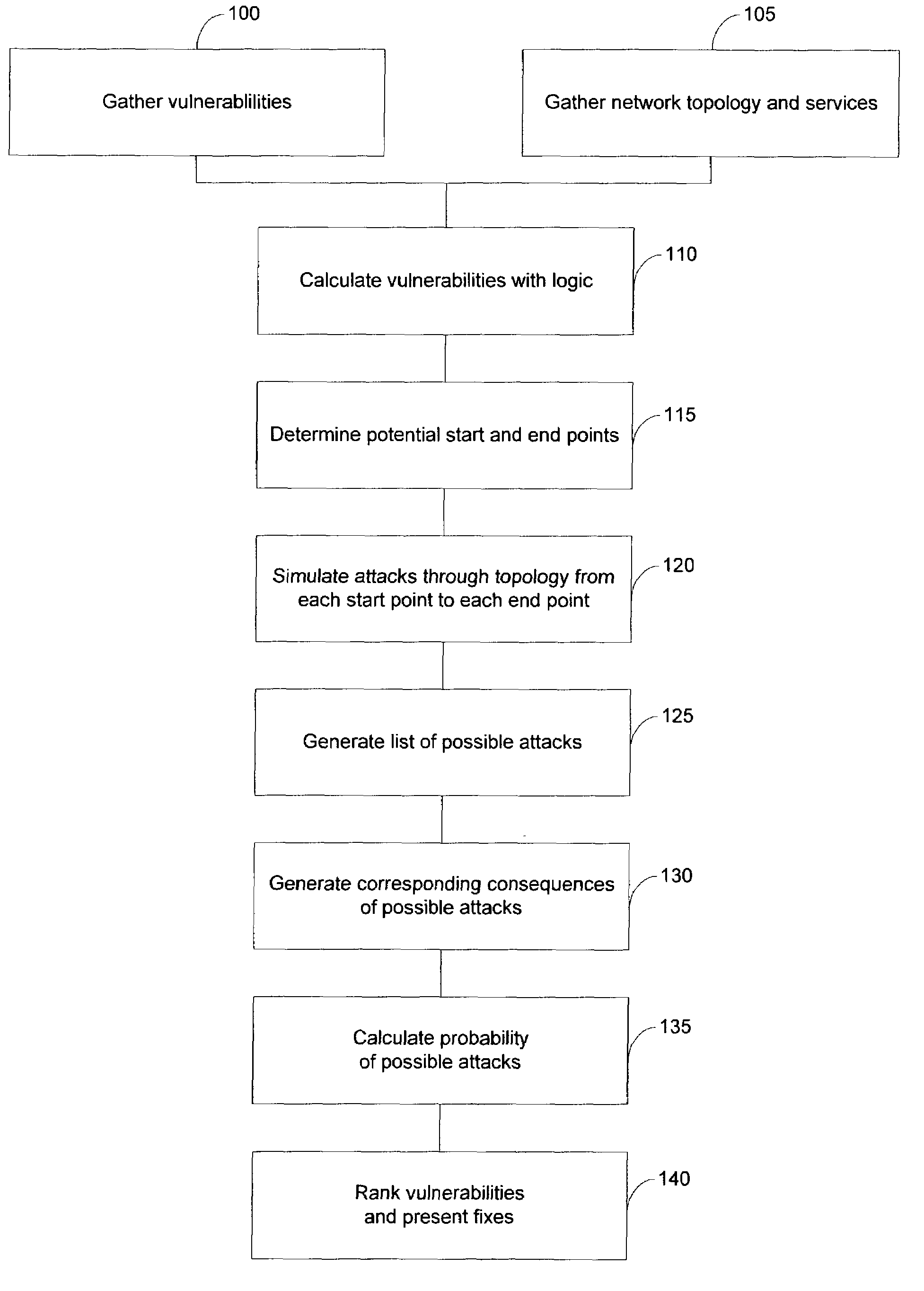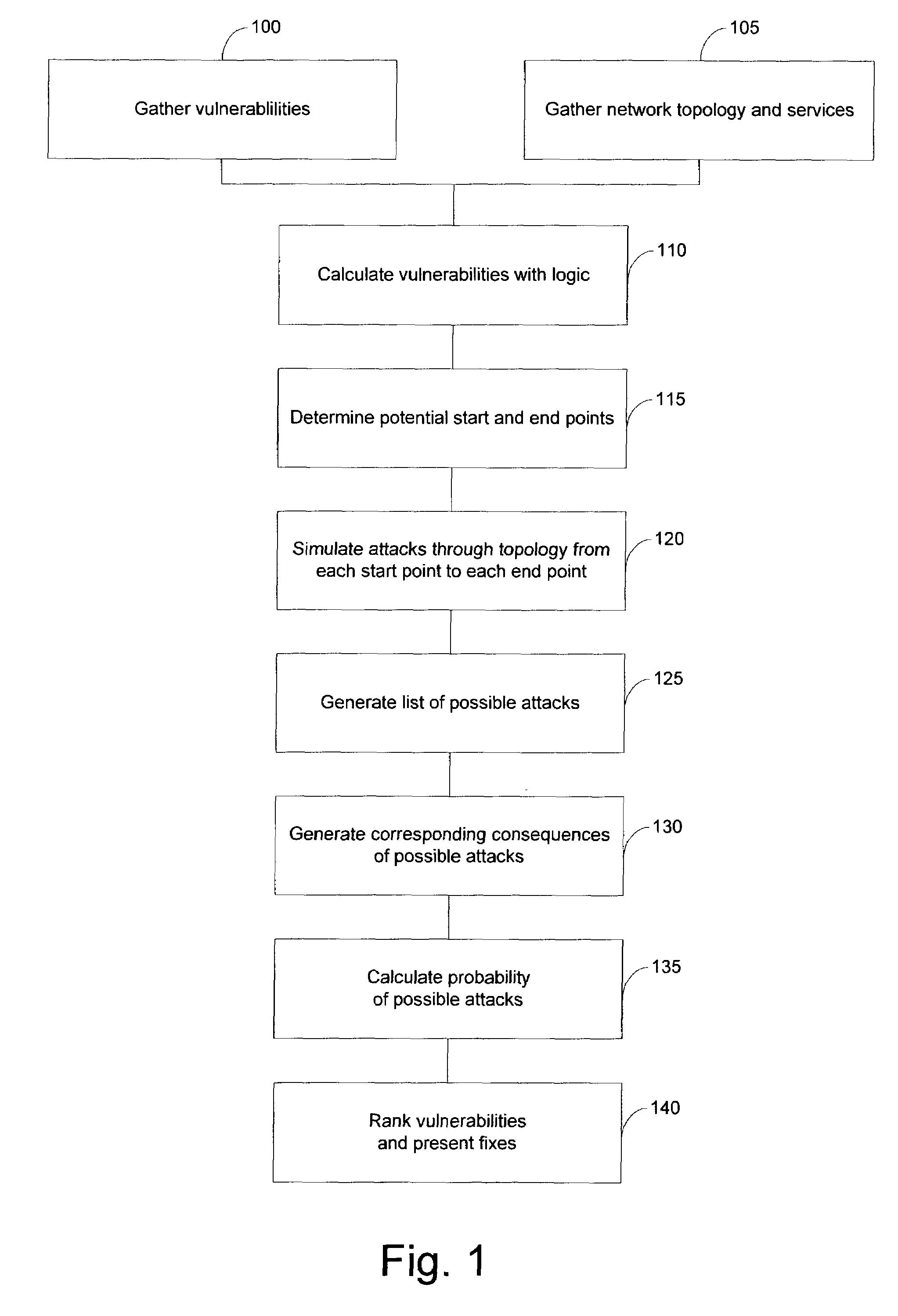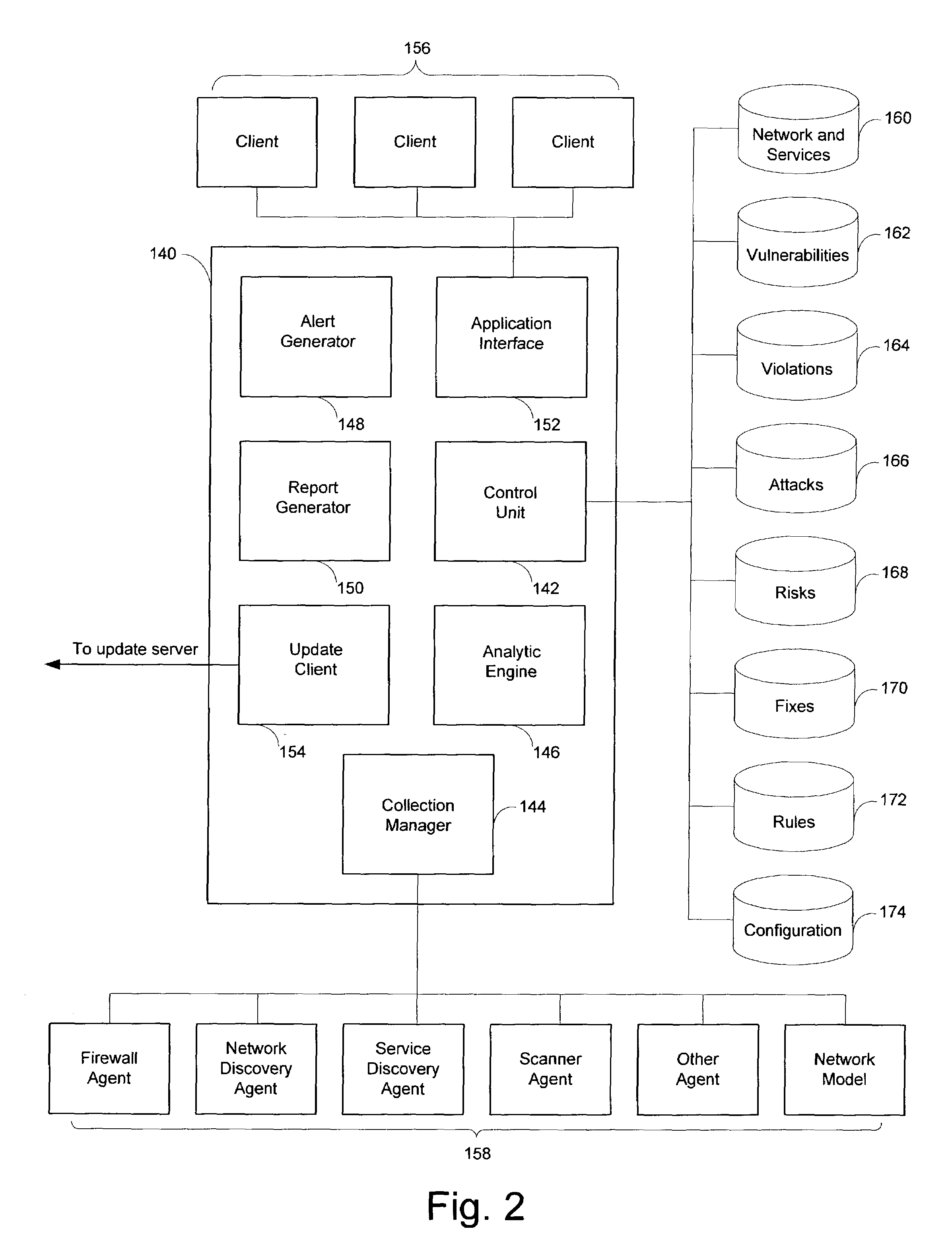System and method for risk detection and analysis in a computer network
a computer network and risk detection technology, applied in the field of system and method for risk detection and analysis in a computer network, can solve problems such as denial of service and theft of corporate secrets, computer network vulnerabilities, and weaknesses in computers and devices, and achieve the effect of reducing risks
- Summary
- Abstract
- Description
- Claims
- Application Information
AI Technical Summary
Benefits of technology
Problems solved by technology
Method used
Image
Examples
Embodiment Construction
[0025]Preferred embodiments of methods, systems, and computer programs according to the invention are described through reference to the Figures.
[0026]The following are examples and illustrations relating to terms used herein, and are not intended to be limiting of the scope of such terms. The term, “network,” as used herein, whether itself or in association with other terms, generally includes or refers to not only a network as a whole, but also any components or aspects thereof, such as network nodes, groups of network nodes, or components or aspects of network nodes, as well as services, applications, hardware, hardware components, software, software components, and the like, associated with the network or any component or aspect thereof, as well as any associated configurations. The term, “network service,” and similar terms, as used herein, generally includes any software, software components, applications, operating systems, and the like, associated with the network, its nodes...
PUM
 Login to View More
Login to View More Abstract
Description
Claims
Application Information
 Login to View More
Login to View More - R&D
- Intellectual Property
- Life Sciences
- Materials
- Tech Scout
- Unparalleled Data Quality
- Higher Quality Content
- 60% Fewer Hallucinations
Browse by: Latest US Patents, China's latest patents, Technical Efficacy Thesaurus, Application Domain, Technology Topic, Popular Technical Reports.
© 2025 PatSnap. All rights reserved.Legal|Privacy policy|Modern Slavery Act Transparency Statement|Sitemap|About US| Contact US: help@patsnap.com



